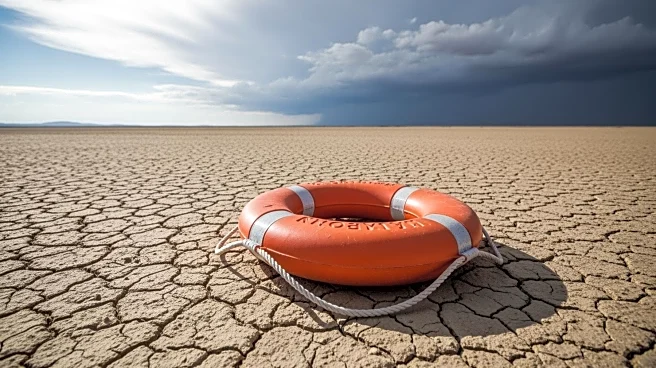What's Happening?
The U.S. government's Disaster Relief Fund is facing a critical shortage as the federal shutdown continues into its fourth week. The fund, essential for financing federal disaster assistance and deploying staff to affected areas, has dropped to precarious
levels, raising concerns about the government's ability to respond to natural disasters. FEMA officials have warned that the fund's balance is now below $8.4 billion, which is insufficient for ongoing and future disaster response efforts. The shutdown, driven by a political standoff over healthcare subsidies, has left the fund vulnerable, with no immediate resolution in sight.
Why It's Important?
The depletion of the Disaster Relief Fund is alarming as it threatens the government's capacity to provide timely assistance during natural disasters, particularly during hurricane season. This situation could lead to delayed recovery efforts and inadequate support for disaster survivors, exacerbating the impact of such events. The political impasse over healthcare funding further complicates the issue, highlighting the interconnectedness of policy decisions and emergency preparedness. The fund's shortage underscores the need for stable and reliable funding mechanisms to ensure effective disaster management.
What's Next?
With the government shutdown showing no signs of resolution, FEMA may need to prioritize immediate disaster response over long-term recovery efforts. The agency is likely to face increased pressure to manage limited resources effectively. Meanwhile, the political standoff over healthcare subsidies continues to hinder progress on replenishing the fund. The situation calls for urgent legislative action to address both the funding shortfall and the broader implications of the shutdown on federal disaster response capabilities.














